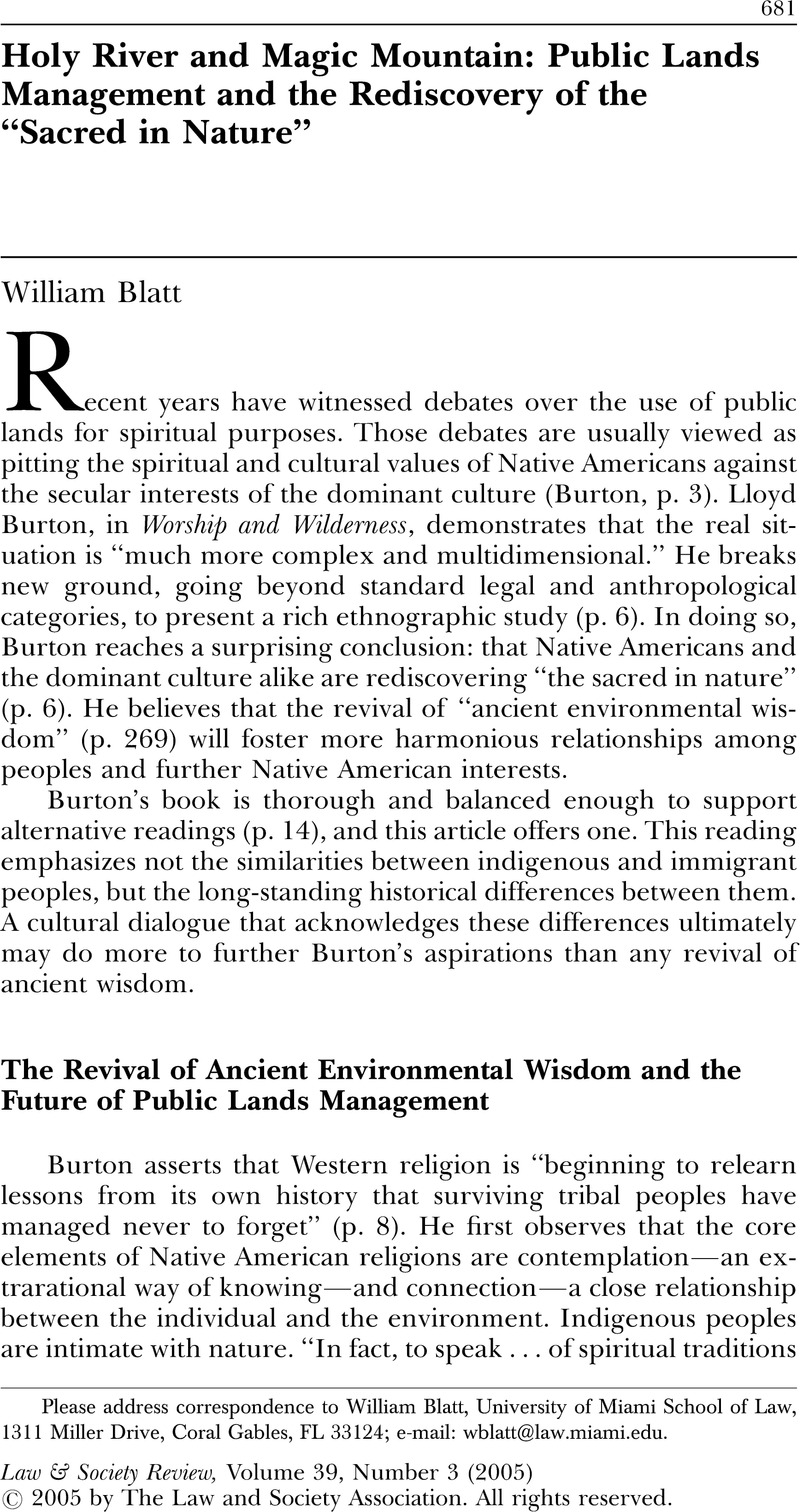No CrossRef data available.
Article contents
Holy River and Magic Mountain: Public Lands Management and the Rediscovery of the “Sacred in Nature”
Published online by Cambridge University Press: 01 January 2024
Abstract
An abstract is not available for this content so a preview has been provided. Please use the Get access link above for information on how to access this content.

- Type
- Research Article
- Information
- Copyright
- © 2005 Law and Society Association.
References
References
Acton Institute, “A Biblical Perspective on Environmental Stewardship,” http://www.acton.org/ppolicy/environment/theology/m_protest.html (accessed on 8 July 2003).Google Scholar
City University of New York “The American Religious Identification Survey,” produced by the Graduate Center of CUNY, http://www.gc.cuny.edu/studies/appendix.htm.Google Scholar
Colson, Charles “Cleaning up the Planet: Saving the Planet through Technology, and Are People a Virus?,” http://www.breakpoint.org/Breakpoint/channelRoot/FeaturesGroup/BreakPointCommentaries.Google Scholar
Dunlap, Riley E. (2002) “An Enduring Concern: Light Stays Green for Environmental Protection,” Public Perspective: Roper Center Review of Public Opinion and Polling, 13, no. 5, http://web.lexis-nexis.com/universe/form/academic/s_guidednews.html.Google Scholar
Evangelical Environmental Network, (2003) http://www.creationcare.org/responses/faq.php (accessed on 8 July 2003).Google Scholar
Interfaith Council for Environmental Stewardship “The Cornwall Declaration on Environmental Stewardship,” http://www.stewards.net/CornwalllDeclaration.htm. at 2 (same).Google Scholar
National Council of Churches. http://www.webofcreation.org/education/policystatements/socialpolicyindex.htm.Google Scholar
Graduate Center, City University of New York (2001) “American Religious Identification Survey” http://www.gc.cuny.edu/studies/key_findings.htm (accessed 2 June 2003).Google Scholar
Interfaith Council for Environmental Stewardship (1999) “The Cornwall Declaration on Environmental Stewardship” http://www.stewards.net/CornwallDeclaration.htm (accessed 17 June 2005).Google Scholar
Ladd, Everett C. (1990) “Politics: What do Americans Really Think about the Environment” Public Perspective: A Roper Center Review of Public Opinion and Polling, 1, no. 4, http://web.lexis-nexis.com/universe/form/academic/s_guidednews.html.Google Scholar
National Council of Churches (2003) “Eco-Justice Working Group” http://webofcreation.org/ncc/index.html (accessed 9 July 2003).Google Scholar
Cases Cited
Corporation of Presiding Bishop v. Amos, 483 U.S. 327 (1987).Google Scholar
Lemon v. Kurtzman, 403 U.S. 602 (1971).Google Scholar
Walz v. Tax Comm'n 397 U.S. 664 (1970).Google Scholar
Wisconsin v. Yoder, 406 U.S. 205 (1972).Google Scholar


